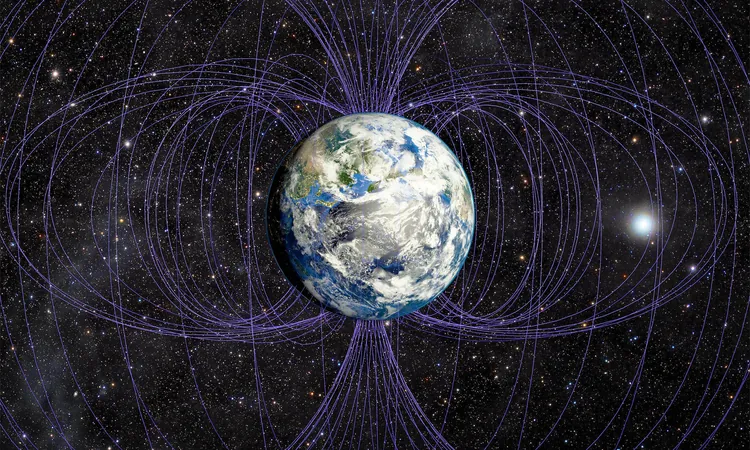
The Magnetic North Pole's Surprising Speed Increase: What You Need to Know
2024-11-23
Author: Ken Lee
What is the Magnetic North Pole?
To understand the implications of this movement, we must clarify what the magnetic North Pole is. It’s the point where the Earth’s magnetic field points straight down, guiding navigation tools like compasses. Unlike the geographic North Pole, which remains fixed, the magnetic North Pole is in a perpetual state of flux, shifting several kilometers annually due to changes in the Earth’s molten outer core.
These shifts can lead to inaccuracies in navigation systems, prompting the need for regular updates to maps and compasses.
The Journey from Canada to Siberia
Historically, the magnetic North Pole resided in northern Canada, but measures taken in the late 20th century revealed a startling transformation. The pole left Canadian shores and journeyed across the Arctic Ocean by the 1990s. During the 2010s, its speed peaked at a shocking 55 kilometers per year. Currently, it’s still on the move, albeit at a reduced rate of 25 kilometers annually toward Siberia.
What Drives This Phenomenon?
Scientists are actively working to decipher the reasons behind this unusual acceleration. Dr. William Brown, a noted geomagnetic expert, posits three potential causes for the magnetic North Pole’s rapid changes:
1. Molten Iron Flow: Variations in the movement of molten iron below the Earth's crust might be affecting the strength and direction of the magnetic field.
2. Solar Activity: High-energy solar particles that interact with the Earth’s magnetosphere—especially during solar storms—could be creating fluctuations in the magnetic field.
3. Historical Reversals: The Earth has a history of magnetic pole reversals, with around 200 such events documented over the past 100 million years. The last major reversal took place about 800,000 years ago.
Navigational Challenges Ahead
The ramifications of a shifting magnetic North Pole extend far beyond theoretical discussions. Our technology—ranging from smartphones to aircraft and naval vessels—heavily relies on accurate magnetic guidance. Any significant shift could distort readings and disrupt how we navigate every day.
The World Magnetic Model (WMM), created by the British Geological Survey and NOAA, is designed to account for the pole's movements. If the magnetic pole shifts faster than updates can occur, it could lead to confusing and potentially hazardous navigation errors.
Preparing for Future Changes
Addressing the potential challenges posed by such movements involves a multifaceted strategy. Experts advocate for:
- Regular updates to the WMM to keep navigation methods precise.
- Enhanced research into Earth’s core dynamics to monitor future changes.
- Public awareness campaigns to educate individuals and industries reliant on magnetic orientation.
Implications for Science and Society
While the latest speeds might not be as extreme, the magnetic North Pole remains a vital area of research for scientists. Observing its movements presents us with invaluable insights not only into the forces shaping our planet but also into the potential threat posed by a complete magnetic reversal.
Such a reversal, while infrequent, could have dramatic effects, weakening Earth's magnetic shield and exposing us more to harmful cosmic radiation, potentially threatening both ecosystems and infrastructure.
As scientists continue monitoring these shifts, society must remain vigilant and informed. The magnetic North Pole’s journey isn’t just an interesting natural phenomenon—it holds profound implications for global navigation systems and technology, reminding us that the Earth’s dynamics are continually in motion.
Stay tuned as we explore more about this silent sentinel and what its journey could mean for our future!





 Brasil (PT)
Brasil (PT)
 Canada (EN)
Canada (EN)
 Chile (ES)
Chile (ES)
 España (ES)
España (ES)
 France (FR)
France (FR)
 Hong Kong (EN)
Hong Kong (EN)
 Italia (IT)
Italia (IT)
 日本 (JA)
日本 (JA)
 Magyarország (HU)
Magyarország (HU)
 Norge (NO)
Norge (NO)
 Polska (PL)
Polska (PL)
 Schweiz (DE)
Schweiz (DE)
 Singapore (EN)
Singapore (EN)
 Sverige (SV)
Sverige (SV)
 Suomi (FI)
Suomi (FI)
 Türkiye (TR)
Türkiye (TR)